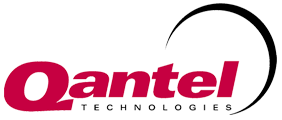Virtualized QICWARE? You Bet!
A question we’ve received a lot lately is Can I run QICWARE on a virtual machine? The answer is of course! QICWARE is platform independent, and as such, doesn’t care if you are running on a virtual machine or a dedicated box. (A virtual machine is one physical machine that looks like multiple machines running the same or different operating systems.) Our in-house machines here at Qantel are virtualized, and we have had many customers virtualize over the last few years.
QICWARE customers have found that moving to virtual servers offers many benefits: better hardware utilization, consolidated hardware, decreased downtime, reduced operational costs, faster deployment, improved maintenance capabilities, greater reliability and faster disaster recovery.
A typical customer might have QICWARE running on Red Hat Linux, a Windows 7 server to host Print Connector sessions, and another server to host Exchange. In a non-virtual world, that means multiple physical servers -- each with its own hardware, maintenance agreements, power and cooling requirements. Virtualization portions a single physical machine into to multiple virtual servers/machines (VM). Since this only requires a single physical machine, it is likely to be more cost effective and efficient than if separate machines were used.
Virtualization is controlled by a virtualization manager, commonly called a hypervisor. Each VM runs its own guest operating system, the preferred OS for the application. In the case of QICWARE, this is normally Red Hat Enterprise Linux.
A virtual machine running Red Hat Enterprise Linux and QICWARE supports live migration. This allows the system administrator to migrate live VM QICWARE between server nodes without affecting end users. Unused server nodes can be taken down for service, upgrade, or replacement without causing downtime.
Load balancing between virtual processors is transparent in VM QICWARE. The hypervisor handles the load balancing for more efficient CPU usage. The concept is simple: allocate the processor and memory to the instance that needs it most at that moment.
Snapshots of each VM can be taken and uploaded to a backup proxy server for offline backup. Offline backup reduces or eliminates the downtime required for daily backup.
VMs allow for greater interoperability, faster deployment and disaster recovery, as the server node is abstracted from the VM. Server nodes can be replaced or upgraded with faster CPUs, an increased number of CPU cores, an increased number of sockets, increased memory size, and increased memory channels.
VM QICWARE uses virtual network interface cards (NICs). Virtual NICs and virtual switches can create a virtual network with fall back and load balancing capabilities. Network traffic on physical NICs can be reduced as traffic between virtual NICs (as in QICNET) can stay within the server node.
The VM uses a virtualized disk. As the virtualized disk is abstracted from the physical disk, network-attached storage can be enhanced with faster drives, larger drives, and more drives. Disk bandwidth is easily enhanced under virtualization.
Virtualization can result in lower costs, faster performance, and less downtime. Your Qantel support team can outline configuration considerations and guide you in determining which virtualization platform (VMware or Microsoft’s Hyper V) will serve you best. Contact the Qantel Helpdesk or call us at 630.300.6997.
